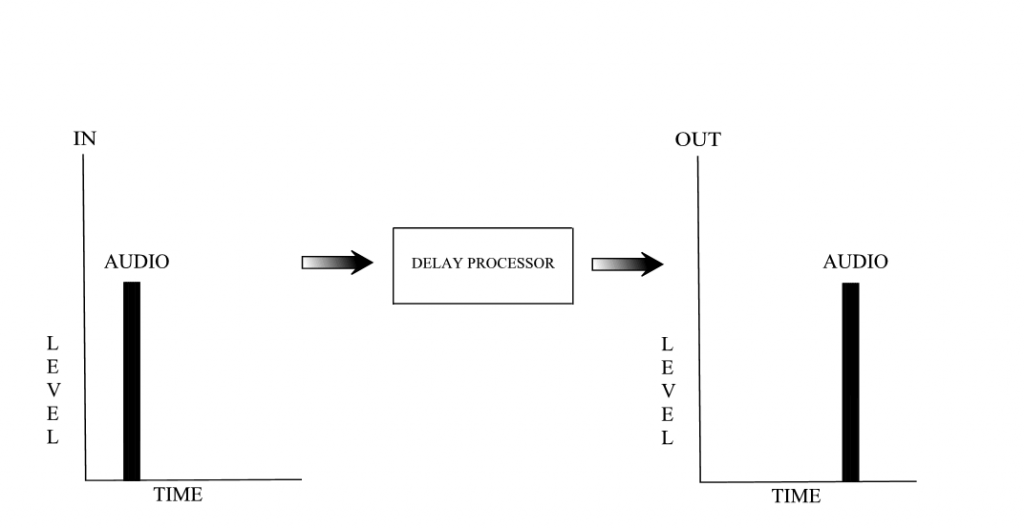Delay Effect - what is it and how does it work
What is the delay effect, how do you use it and when to use it.
Beat Construction
Delay Effect – what is it and how does it work video tutorial explores in depth how a delay works and how best to use it in mix scenarios.
Delay is actually very simple to understand. The process entails taking an audio signal, holding it in temporary memory, and then playing it back after a certain time.

The earliest form of delay involved using tape loops that would record and playback the signal. A signal was fed through the tape via the recording head and a series of playback heads provided the delays. The length of tape, tape speed and switching the head positions determined the delay time. Additionally, the delayed signal could then be fed back into the record heads to create further delays and decays. Complex delay times could be formed by adjusting the distances between the playback heads. Tape delays have been around for a long time and are still used today. Famous makes included the Watkins Copicat, Roland Space Echo (RE201), Echoplex and so on.
The beauty of analog delays, as opposed to their digital counterparts, is that the delays come across as more distant and ‘spatial’ as they are less distinct and coloured. Digital delays are far more precise and clinical but some have specific parameters that emulate tape delay. Control over the delays affords numerous different effects. Echo, which is a very short delay of less than one second, is a common effect but doubling, flanging, phasing, chorus and ‘dub delay, are also very common. The dub delay effect is achieved by feeding the output of the delay back into the input and if enough of the output is fed back into the delay unit the delay will start to self oscillate thus creating the famous ‘dub delay’. This is called feedback. Modulation, varying the delay time over a particular range is another key parameter of time-based delays. By assigning minimum and maximum values, the delay time will sweep between the two and create a ‘moving’ delay as the times vary over the set range. You can also ‘tap’ a delay time into some of the more modern delay units. This can create some unique time delays and allows the user more control over time. Different amounts of time delays give different effects.
Today, we are afforded delay units with vast amounts of control from the pre-delay all the way to panning and retiming of the delays along with EQ and filter sections. However, the use of delay doesn’t end with simple repetitions of the dry signal. Delays have been the preferred choice for creating space and width in a mix. Stereo width can be achieved by simply delaying one channel of the stereo file. Vocals can be both spread and thickened by using delays. Drum beats can be livened up and shaped to produce a shuffle effect by the simple use of delays and a lot of today’s delay units, software, and hardware, allow for tap tempos, a function that allows the user to ‘tap’ their own delay times into the unit. For me, delays are one of the most, if not the most, potent of all the effects available as so many other effects can be achieved simply by altering the base parameters of the delay unit.
As with reverb timing is everything. Reverb might be the ‘go to’ effect for most producers but delay is making up ground as one of the most versatile of all effects. Let me show you what it can do and how it does it. In the Delay Effect – what is it and how does it work video I use a drum beat sequence and run it through the detailed FabFilter Timeless delay effect plugin. I explain how Timeless works and how to use it to achieve different delay textures. I show you how to use the modulation matrix to craft different types of delay effects.
The plugin used in the Delay Effect – what is it and how does it work video:
Topics covered in this video are:
- What is Delay
- How does Delay work
- What are the functions and parameters
- Using Delay instead of Reverb
- Delay clarity and colour
- Understanding Time and Timing
- Controlling Time via modulation
- Phase
If you found this tutorial helpful maybe these will also be of benefit:
Using a Delay to create Chorus
Using Delay to Manipulate Stereo Width
Using a Delay to create a Crackle Effect
Studio and Multi Effects Masterclass
Delay Effect – Cross Feedback and Style
